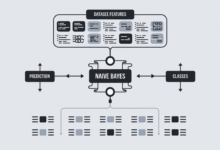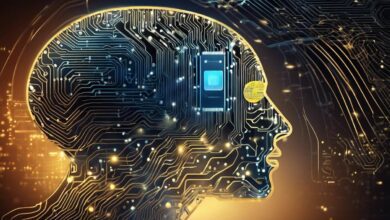
In an age where the boundaries of technology are consistently being redefined, machine learning stands as a beacon of innovation, reshaping the canvas of what computers can achieve. As we dive into the Fundamentals of Machine Learning, we embark on a journey through the intellectual bedrock that fuels this dynamic field. The orchestration of algorithms, data structures, and theoretical models presents a symphony of potential, where systems learn from experience and data to predict and adapt with an almost intuitive grace. Vital concepts such as supervised, unsupervised, and reinforcement learning will be unwrapped to showcase the transformative power vested in the hands of machines today. Our exploration goes beyond mere functionality to grasp the intricate dance of algorithms shaping a future once imagined only in the realm of science fiction.
Fundamentals of Machine Learning
Exploring the Core Principles Underpinning Machine Learning
Machine learning, at its essence, can be best understood as an interdisciplinary domain that amalgamates aspects of computer science, statistics, and robust algorithmic foundations to enable machines to improve at tasks through experience. This emerging field is concretized on several foundational principles that act as cornerstones for the development of intelligent systems capable of adaptive behavior and informed decision-making.
First and foremost, the principle of data representation stands as a bedrock for all machine learning endeavors. This entails the method by which information is structured, usually in the form of features that can be readily processed by algorithms. Quality and meticulously structured data is the lifeblood of machine learning, as it allows for meaningful patterns and inferences to be discerned.
Subsequent to the representation of data is the principle of model selection. A model in machine learning is akin to a hypothesis in scientific research, a framework that suggests how we believe data might interrelate. Algorithms are employed to sort through this data in an attempt to either predict or classify information. Models range from simple linear regressions to complex neural networks, each with unique capabilities and suited to different types of problems.
Another critical principle is the minimization of error through learning. Herein, the machine learning model is iteratively adjusted and honed in response to the discrepancies, or errors, between its predictions and the actual outcomes. This process, known as training, involves optimization techniques that seek to minimize these errors over time, enhancing the performance and accuracy of the model.
Generalization is an imperative concept in machine learning, emphasizing the model’s ability to perform well on new, unseen data, thereby ensuring its utility outside the initial training dataset. This avoids the pitfall of overfitting, where a model may perform extraordinarily well on its training data but fail miserably when exposed to new data.
Lastly, a model’s evaluation is key to determining its efficacy and appropriateness for deployment. Evaluation metrics, which can vary based on the problem at hand and the specific machine learning task, serve as benchmarks to objectively assess the performance of a model. This allows for a clear understanding of a model’s strengths and areas needing improvement.
Collectively, these foundational principles guide the development of machine learning systems. They anchor this area of research in rigorous scientific inquiry, providing a framework for explorations that yield intelligent behavior from digital artifacts. It is the meticulous adherence to these principles that ensures the robustness, reliability, and relevance of machine learning as a transformative force in the landscape of modern technology.

Machine Learning Algorithms
Understanding diverse machine learning algorithms requires an exploration into the complex manner in which these computational entities approach problem-solving. Subsequent to the initial considerations of data representation, model selection, and the quintessential learning through error minimization, we shall now delve into the operational mechanisms behind these algorithms and the plethora of issues they ambitiously tackle.
At the core, machine learning algorithms are categorized into supervised, unsupervised, and reinforcement learning, each with its unique protocol for digesting data and yielding insights. Supervised algorithms, as the term suggests, operate under the guidance of labeled datasets—paragons of input-output pairings—that instruct the algorithm on the patterns to learn. These algorithms excel in predictive tasks, like forecasting weather patterns or discerning fraudulent financial transactions.
Conversely, unsupervised algorithms roam the data landscape devoid of explicit directions. They unearth structure within data autonomously, clustering similar data points and detecting anomalies in datasets. Through methods such as k-means clustering and principal component analysis, these algorithms are pivotal in market segmentation and gene sequence analysis.
The third variant, reinforcement learning, adopts a strategy akin to the learning process of sentient beings—learning through interaction and reward. These algorithms make decisions, receive feedback from the environment in the form of rewards or penalties, and adjust their actions accordingly. Its applications are far-reaching, from developing autonomous vehicles to optimizing investment strategies.
Notably, within these broad categories lie specialized algorithms, each crafted to tackle specific subsets of problems. For instance, decision trees dissect data into branches, leading to clear decision-making paths, whereas neural networks, inspired by the neuronal structure of the human brain, are instrumental in complex pattern recognition tasks such as image and speech recognition.
While the variety of machine learning algorithms is vast, the problems they solve are essentially a reflection of human endeavors to automate the process of decision-making and pattern detection in massive datasets. They are integral in improving healthcare through disease prediction, enhancing customer experiences via recommendation systems, and even propelling scientific discovery by identifying novel compounds in pharmacological ventures.
In essence, diverse machine learning algorithms are a testament to the ever-advancing frontier of computational efficacy, each algorithm contributing to the vast tapestry of problem-solving techniques. From simplifying data analysis to automating complex tasks, machine learning stands as a testament to human ingenuity and our relentless pursuit of knowledge.

Data Preprocessing and Feature Engineering
The indispensability of data preprocessing and feature engineering in the context of machine learning cannot be overstated. It merits serious consideration as a foundational step that allows algorithms to perform at their optimal capacity. Beyond the previously discussed facets of data representation, model selection, and the pillars of learning and generalization, we must delve into the realm of preparing and refining data to truly comprehend machine learning’s capacity.
Data preprocessing encompasses a range of activities aimed at transforming raw data into a format that machine learning algorithms can decipher effectively. In the absence of this critical phase, data may be replete with inconsistencies, missing values, and noise, all of which can lead to skewed or inaccurate outcomes. As a result, preprocessing includes cleaning data to rectify inaccuracies and fill gaps, normalizing or scaling features to ensure that no variable unduly influences the model due to its scale, and encoding categorical variables in a manner that algorithms can process.
Feature engineering, a highly creative and insightful facet of machine learning, involves crafting new input features from existing ones to improve model performance. This is not a task for the uninitiated; it requires a comprehensive understanding of both the data and the underlying problem to generate features that can significantly improve model accuracy. For example, while one may initially consider raw timestamps as data inputs, it is through feature engineering that one distills such timestamps into more meaningful features, like the hour of the day or day of the week, which might better capture patterns in the data relevant to the problem at hand.
It must be acknowledged that the potency of a machine learning model is not solely a consequence of the algorithm chosen but is deeply intertwined with the quality of the input provided. Thus, it is the meticulous efforts invested in data preprocessing and feature engineering that empower machine learning models to discern complex patterns, make accurate predictions, and contribute considerably to intelligent decision-making across a myriad of domains.
Recognizing that the initial stages of any machine learning task are as foundational as the construction of a sturdy edifice, we must attest to the intellectually rigorous nature of these processes. They are not mere formalities but sophisticated endeavors that bolster our machine learning models, enabling them to achieve the extraordinary feat of transforming raw data into profound insights and foresights.
In conclusion, the imperatives of data preprocessing and feature engineering are critical to the efficacy of machine learning, and hence, deserve the dedicated attention of practitioners and researchers alike. Through the diligent application of these processes, machine learning continues to ascend as a paragon of human intellectual pursuit.

Neural Networks and Deep Learning

Ethical Considerations and Future Challenges
Moving beyond the quintessential technical foundation of machine learning, one must consider the ethical quandaries and imminent challenges poised to confront the field’s progression. As the tendrils of machine learning weave into the fabric of society, it becomes imperative to address these concerns head-on, ensuring the technology develops in a manner beneficial to all.
The ethical dimension encompasses issues of bias and fairness. Machine learning models, inherently reliant on data, risk perpetuating biases present in their training datasets. For instance, models trained on historical hiring data could inadvertently learn and exacerbate existing gender or racial biases. It is paramount to interrogate datasets for such biases and establish strategies to mitigate their influence on algorithmic decisions.
Privacy represents another profound concern. Algorithms often require vast amounts of data, which could contain sensitive personal information. Preserving individual privacy while training models is not an optional consideration but a fundamental responsibility. Techniques such as differential privacy can help protect individual identities without sacrificing the utility of data.
Accountability and transparency in machine learning are cornerstones of ethical adoption. When algorithms influence critical decisions in fields like healthcare or criminal justice, being able to explain and justify those decisions is essential. Pursuit of interpretable models where the decision-making process is both visible and understandable to humans is gaining momentum and importance.
Security of machine learning systems is paramount, given their increasingly ubiquitous nature. With the rise of adversarial machine learning, where attackers input data to mislead models, developing robust systems resistant to such manipulations is a significant challenge requiring immediate and ongoing effort.
Lastly, the future of work and societal impact engenders considerable debate. As machine learning automates more tasks, the potential displacement of jobs raises questions about economic impacts and the future landscape of employment. Engaging with policymakers, educators, and communities to manage this transition is a multidisciplinary challenge that extends far beyond the confines of algorithmic design.
In conclusion, as the field of machine learning accelerates, it behooves researchers and practitioners to remain vigilantly attuned to the ethical dimensions and societal consequences of their work, fostering a landscape in which the proliferation of this technology aligns with the foundational principles of equity and broad-based benefit. Responsible stewardship of machine learning technology is not merely a professional obligation but a social imperative to be instilled at every level of development and deployment.

The exploration of machine learning and its implications paints a landscape rich with opportunities and riddled with profound ethical quandaries. While we have ventured through the mechanics of algorithms and the depths of neural networks, up to the precipices of looming challenges, we are witnesses to just the beginning of an evolutionary leap in computational intelligence. The terrain ahead is uncharted, promising unparalleled innovation tempered by the responsibility to navigate the ethical ramifications that accompany it. The pursuit of artificial general intelligence and the unfolding narrative of autonomous systems ensures that our engagement with machine learning will be anything but static. As we advance, the enduring quest for wisdom in the application of these formidable tools becomes the cornerstone of an enlightened path forward, crafting a future where technology serves humanity with both ingenuity and integrity.
Writio: AI-powered content writer & publisher. This article was crafted by Writio.








